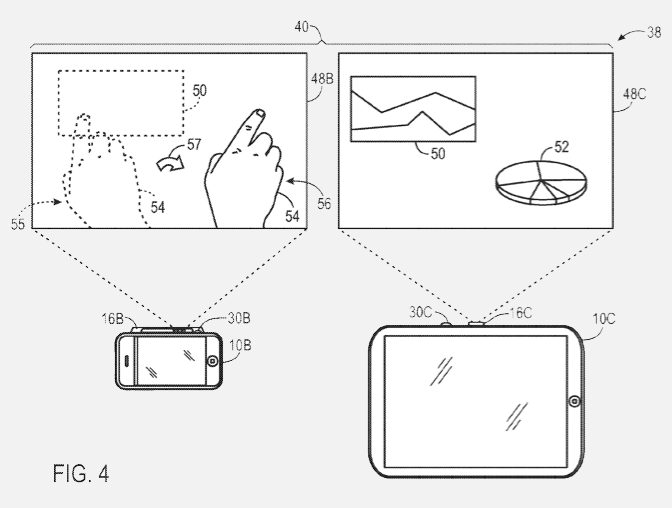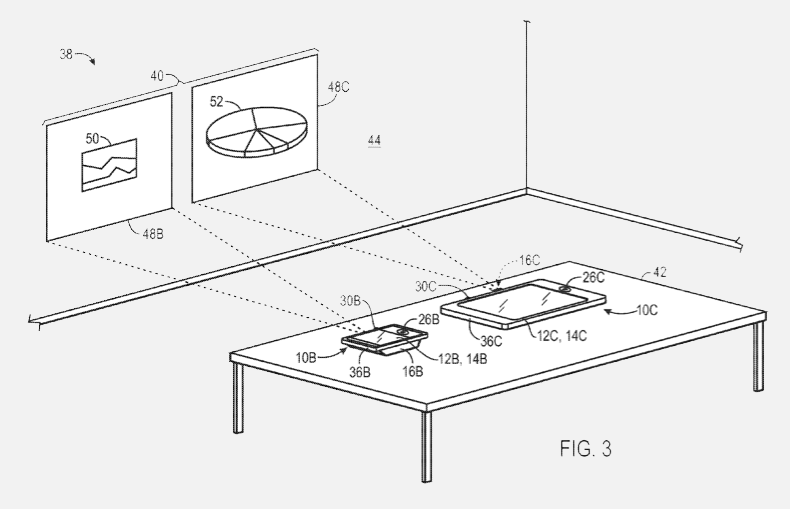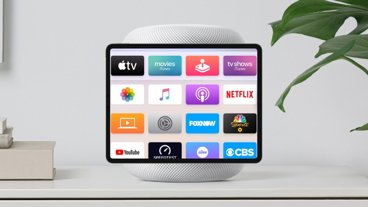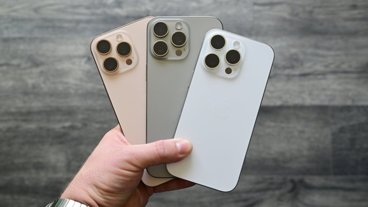The U.S. Patent and Trademark Office published the patent application, entitled "Projected Display Shared Workspaces," on Thursday, along with filings related to simplified maps and wireless carrier ranking.
The filing describes the combination of mobile devices with built-in pico projectors and a laptop computer with a projector accessory to create a shared projected workspace. The resulting projected displays could be placed side by side to create a contiguous display, with each device displaying a portion of the unified image.
Embodiments of the invention include the application of a graphical user interface for transferring images between displays, as well as the use of a camera or touchscreen to detect user gestures that interact with the images.
For instance, a user could perform a specific gesture to transfer images between projected displays. Example gestures include a flicking motion to transfer an image from one projected display to another and a clenched fist gesture that would serve as a copy image command.
The application mentions iPods, iPhones and each of its Mac computers by name, as well as "a tablet computer," as possible devices in the invention. In some cases, the projectors are described as internal to the device, while other embodiments refer to the use of a removable attachment.
Apple goes on to suggest that GPS and radio frequency identification could be used to help the electronic devices determine the relative positions of other devices forming the shared workspace. Another embodiment describes the use of a device's camera to monitor neighboring projected displays in order to determine its position.
Apple filed for the patent on February 11, 2010. Anthony Fai is credited as the inventor.
Although rumors of a pico projector-equipped iPhone have persisted for years, sources from pico projector makers have reportedly said that the technology will not be ready for potential inclusion in Apple's devices until 2013. "Large power consumption, weak lumen rate and poor image quality" are said to be the drawbacks that still need to be resolved.
 Josh Ong
Josh Ong








-m.jpg)






 Charles Martin
Charles Martin


 Wesley Hilliard
Wesley Hilliard
 Stephen Silver
Stephen Silver
 William Gallagher
William Gallagher

 Marko Zivkovic
Marko Zivkovic








17 Comments
The train 'steams' on. LED technology, as successful as it has been, is really only at the beginning of its revolution. Efficiencies will improve, colour temperature will become more natural (there is some beautiful, natural room lighting available now) and projection imaging technologies will improve out of sight. Modulation transfer functions will improve.
Exciting times for imaging technologies.
External device seems more likely
The train 'steams' on. LED technology, as successful as it has been, is really only at the beginning of its revolution. Efficiencies will improve, colour temperature will become more natural (there is some beautiful, natural room lighting available now) and projection imaging technologies will improve out of sight. Modulation transfer functions will improve.
Exciting times for imaging technologies.
One day:
- place your phone in charger / stand
- keyboard / gesture area projected on the table in front
- workspace projected on the wall behind
Aaaahhhhhhh I love Apple Aaaahhhh. Delete this reply. Aaaahhhhhhhh.
Nobody cares about a projector on a phone.
Nobody cares about a camera on an iPad.
Nobody cares about copy and paste on the iPhone.
Nobody cares about multitasking on the iPhone.
Nobody cares about a video iPod.